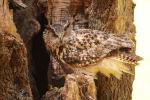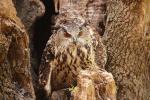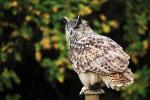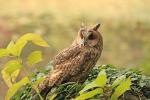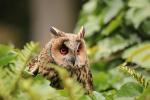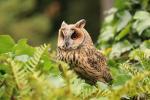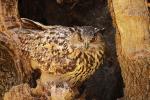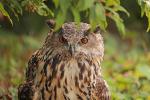The Eagle Owl
The European Eagle Owl was a native of Britain until the latter part of the 19th Century when due mainly to man’s persecution they became extinct. It was not until the late 1990s that conservationists confirmed that a pair had successfully bred on the North Yorkshire Moors, and today there are thought to be around 50 breeding pairs. Other wild Eagle-Owls have also been sighted in Galloway, Inverness-shire, and Sutherland in Scotland, and today there are calls to add them to the official list of British Birds again.
Eagle Owls are the second largest of the owls and their size and aggressive nature make them the dominant bird of prey wherever they are found. This impressive owl is larger than a Snowy owl and was once relatively common throughout the British Isles.
The Eagle-Owl has a quite diverse diet and is an exceptionally talented hunter. These powerful owls hunt and kill everything from rabbits and voles to small deer and even other raptors.
As one of the largest owls in the world, the Eagle-Owl is large and imposing. They are around 58 to 71cm in length and have a wingspan of around 150 to 180cm, thus making them the largest owl in the UK, and one of the UK's largest birds, a similar size to the Red kite and smaller than the Golden and White-Tailed eagles.
Eurasian Eagle-Owls have large ear tufts and feature typically owl-like plumage; their wings are dark and light brown and their bodies slightly lighter. The owl has large, orange eyes rimmed in black with striking black pupils. They can vary from pale to dark, reddish-orange depending mainly on the subspecies. It has a facial disc of dense feathers that are light brown and speckled. Its beak is strongly curved and mostly black, with lighter feathers underneath.
|

